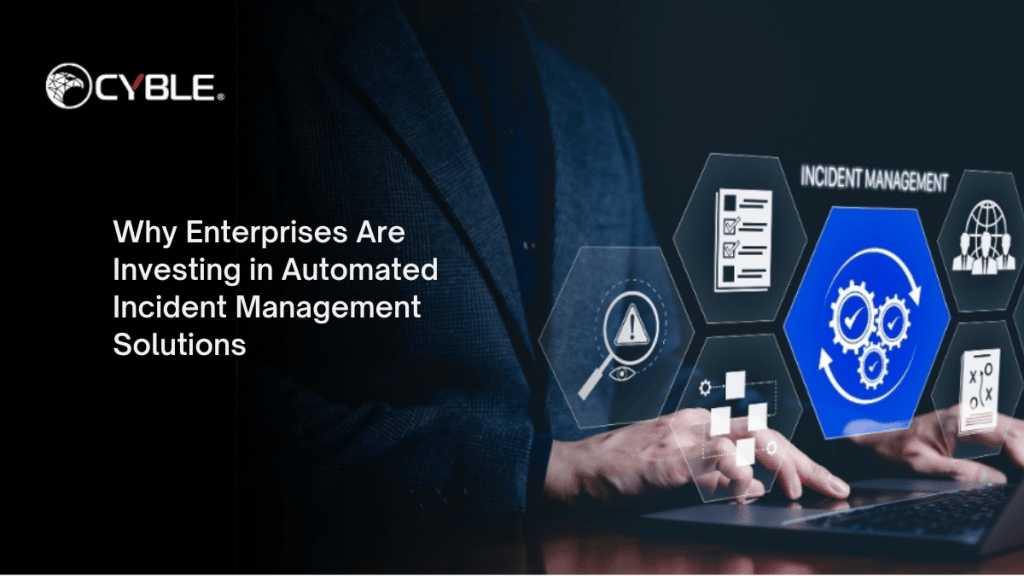When a system goes down or a suspicious activity alert hits the dashboard, every second counts. And yet, in many organizations, the response still relies on manual effort: chats, checklists, ticket updates, and people struggling to piece everything together. It is a process that’s slow, messy, and unsustainable to say the least.
That’s why more and more enterprises are shifting to automated incident management solutions, not just as a technical upgrade, but as a fundamental change in how they manage risk, maintain uptime, and protect their digital operations.
From cutting response times in half to enabling 24/7 monitoring without burning out teams, incident response automation tools are becoming essential in IT war rooms.
But what’s really behind this shift, and why is enterprise incident management becoming a boardroom topic rather than just an IT concern?
Here’s what’s changing, and why it matters.
The Traditional Challenge of Incident Management
Incident management in its manual form has always been reactive, resource-intensive, and prone to errors. IT teams often juggle a deluge of alerts, relying on fragmented tools and human intervention to identify and respond to issues. This model not only delays resolution times but also increases the likelihood of oversight and burnout among teams.
In an ecosystem where even minor issues can escalate quickly, traditional approaches simply can’t keep up. IT incident management software that lacks automation struggles to process the volume and complexity of modern threats and outages.
This has led many to ask: why automated incident management is important?
The Case for Automation in Enterprise Incident Management
Automation in incident management addresses many of the pain points faced by IT and security teams. Here are key reasons why enterprises are making the shift:
- Speed and Efficiency: Automated incident response drastically reduces the time to detect and resolve incidents. Instead of waiting for a human to assess the situation, automation kicks in immediately, executing predefined workflows to contain and mitigate the issue.
- Consistency in Response: Automation ensures that incidents are handled in a consistent and compliant manner. There’s no variation in how an incident is triaged or escalated, reducing risk and ensuring better outcomes.
- Scalability: As businesses grow, the number of potential incidents grows with them. Manual processes struggle to scale. AI-powered incident management systems can handle increasing workloads without needing proportional increases in headcount.
- Reduced Human Error: By automating routine tasks, enterprises minimize the risk of mistakes. Whether it’s applying the wrong patch or misclassifying an alert, automation ensures higher accuracy.
- 24/7 Incident Response: Automation works around the clock. With automated incident detection and response, businesses are never off guard, even outside regular office hours.
Key Features of Modern Automated Incident Management Solutions
Today’s incident management solutions integrate AI, machine learning, and organization capabilities to provide a full-spectrum response system. Here are some critical features to look for:
- Real-time Alerting and Correlation: Consolidates alerts from various systems and correlates them to reduce noise.
- Automated Workflows: Executes scripts or actions to remediate incidents without manual intervention.
- Root Cause Analysis: Uses machine learning to identify patterns and suggest probable root causes.
- Integration with Existing Tools: Seamlessly integrates with ticketing systems, monitoring tools, and communication platforms.
- Analytics and Reporting: Offers dashboards and detailed reports to track incident trends and team performance.
Benefits of Incident Response Automation for Enterprises
The benefits of incident response automation extend well beyond speed. For enterprises, the advantages are both strategic and operational:
- Improved SLA Compliance: Faster resolution times help meet and exceed service level agreements.
- Enhanced Team Productivity: Teams focus on high-value tasks rather than repetitive incident triage.
- Better Resource Allocation: Automation reduces the need for 24/7 staffing, cutting costs without compromising response quality.
- Proactive Risk Management: By identifying vulnerabilities early, enterprises can address issues before they escalate.
- Data-Driven Decision Making: With strong analytics, teams gain insight into trends and can make informed improvements.
Why Automated Incident Management Is Important in the Era of Cyber Threats
Cyber threats today have become relentless. Ransomware, DDoS attacks, and insider threats are evolving. In this environment, incident management for enterprises must evolve too.
AI-powered incident management systems are uniquely equipped to identify anomalies, predict potential threats, and respond in real time. By adopting automated incident response, enterprises strengthen their cybersecurity posture while freeing up teams to focus on strategic initiatives.
Industry Adoption: A Growing Trend
According to recent surveys, over 70% of enterprises plan to invest in or expand their use of incident response automation tools within the next year.
The demand is being driven by:
- The increasing complexity of IT environments
- The shift to remote and hybrid work
- The need for faster compliance reporting
- Shortages in skilled cybersecurity professionals
Cyble offers an advanced incident management solution that helps enterprises automate threat detection, prioritization, and response. The platform is designed to integrate seamlessly with existing IT environments, ensuring that businesses can rapidly mature their incident management capabilities without overhauling their systems.
Future Outlook: AI and Beyond
As AI continues to evolve, so will the capabilities of IT incident management software. We can expect:
- Increased contextual understanding of incidents
- Adaptive learning that improves with every incident
- Voice-activated workflows and autonomous decision-making
Automation is not just a tool but a strategic partner in enterprise IT.
Conclusion
The move toward automated incident management solutions is not just a trend, it’s a response to the realities of the modern enterprise. Businesses that adopt incident response automation tools are better positioned to handle today’s IT and security challenges.
From faster response times to reduced operational overhead, the benefits of incident response automation are clear. And as the technology continues to mature, the case for investing in enterprise incident management will only grow stronger.
In short, automation isn’t replacing people, it’s empowering them. And in an era where every second counts, that empowerment makes all the difference.
